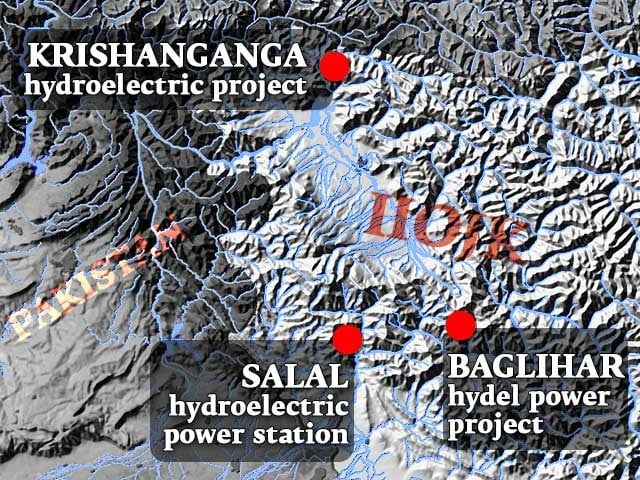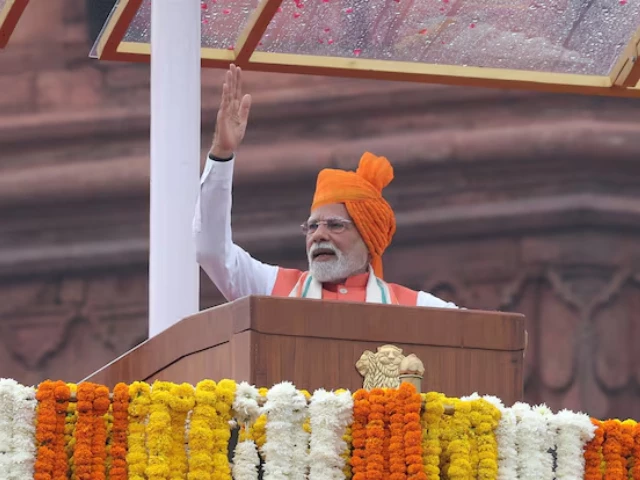This much is clear to us all: The devastating floods, first in Khyber Pakhtunkhwa and now in Punjab, this monsoon season are extreme weather events. So why are we hearing people repeatedly mention that Pakistan is accusing India of making it worse by dumping its excess water into our rivers?
To understand how dam water release works, The Express Tribune spoke with several experts.
Dr Hassaan F Khan, an urban water expert at Tufts University, explained that every dam has two main systems: regular release gates and spillways. The regular gates are used for water supply needs, such as agriculture, and are considered normal releases. “But when a dam fills to its maximum capacity, water cannot be held back because of the risk of structural damage,” he said. “At that point, the spillways are opened to release the extra water. If not, the dam could collapse.”

According to Dr Hassaan, India released water from multiple dams in recent days as they had reached their capacity. “That is what the Indian side is claiming,” he said. “While Pakistan cannot verify this directly, it makes sense given the context. Such releases are not unusual.”
Both extreme rainfall and weather played a role in this year’s flooding in the region. “India saw record-breaking rains, especially in Himachal Pradesh, which sent large flows of water into rivers,” he said. “India was also forced to release water into the Sutlej and Ravi. Prime Minister Modi had previously said India would not allow even a drop of water from these rivers to flow into Pakistan, but when storage is impossible, the water has to be flushed out. They prefer to store water for use in the low-flow season of November and December.”
In response to our question, Dr Hassaan stressed there is no evidence that India deliberately released water to harm Pakistan. “Speculation is possible, but we have never found proof of intentional action,” he said. “Since the suspension of the Indus Waters Treaty, India no longer shares detailed data as before. Now, only brief notifications are sent through the Indian High Commissioner, which is inadequate compared to past agreements. The early warning system is much weaker now.”
Muhammad Umer Karim, a senior researcher and water resource specialist, explained the natural hydrology or water system cycle for this area as background. “In our region, water freezes in winter as ice and glaciers, then thaws in the summer. Combined with monsoon rains, this increases the river flows. Melting glaciers add to this volume. Spillways are opened only when dams are full. For the rest of the year, water is gradually taken out through canals for drinking and irrigation. This time, Indian dams were overflowing, which also led to flooding in the eastern rivers.”
Environmental lawyer Ahmed Rafay Alam pointed out that dam infrastructure on both sides is “essentially the same”. India has three major dams on the Jhelum, Beas, and Ravi. Pakistan has Mangla and Tarbela dams. “Both countries store monsoon and glacier water for winter crops, and both sets of dams were built by American companies. Their designs and operations are essentially the same.”

Photo: Ibrahim Yahya
This year, however, the situation became critical. “The Pong Dam on the Beas, the Bhakra Dam on the Sutlej near Himachal Pradesh, and the Madhopur Headworks on the Ravi reached dangerous levels between August 23 and 25,” he said. “To protect infrastructure, India opened the spillways, and some gates of the Madhopur barrage even collapsed due to water pressure, causing one death. This is what we call a ‘controlled release’ of water.”
Alam said that in India, dam power production is controlled by the federal government, but irrigation and domestic water supply are a provincial responsibility. This is why he believes that New Delhi could have handled the crisis better. “The Thein Dam on the Ravi is in Punjab state where Congress is strong,” he said. “The BJP-led federal government did not share timely data or issue warnings. As a result, Indian Punjab suffered major damage. Around 500 villages were submerged. Now, Punjab’s government is demanding an inquiry, accusing the BJP of deliberately letting Punjab drown. This shows that Pakistan was not the only country hit – Indian villages were also devastated.”
These experts clarified that the main floodwaters do not flow straight from India into Pakistan. Instead, they first pass through several Indian towns and villages, travelling 100–150 km before crossing the border. “Indian water releases added to Pakistan’s misery,” Alam said, “but there is no evidence they were intentional. India itself suffered similar destruction.”
Dr Daanish Mustafa, a professor of water resource geography at King’s College London, added: “Water release occurs when the safe design capacity of a reservoir is exceeded. No infrastructure can stop the peak flow of monsoon water. More rain means more water – it’s that simple. In fact, India has faced even greater destruction than Pakistan, because by the time the water reaches us, its force is already reduced.”

